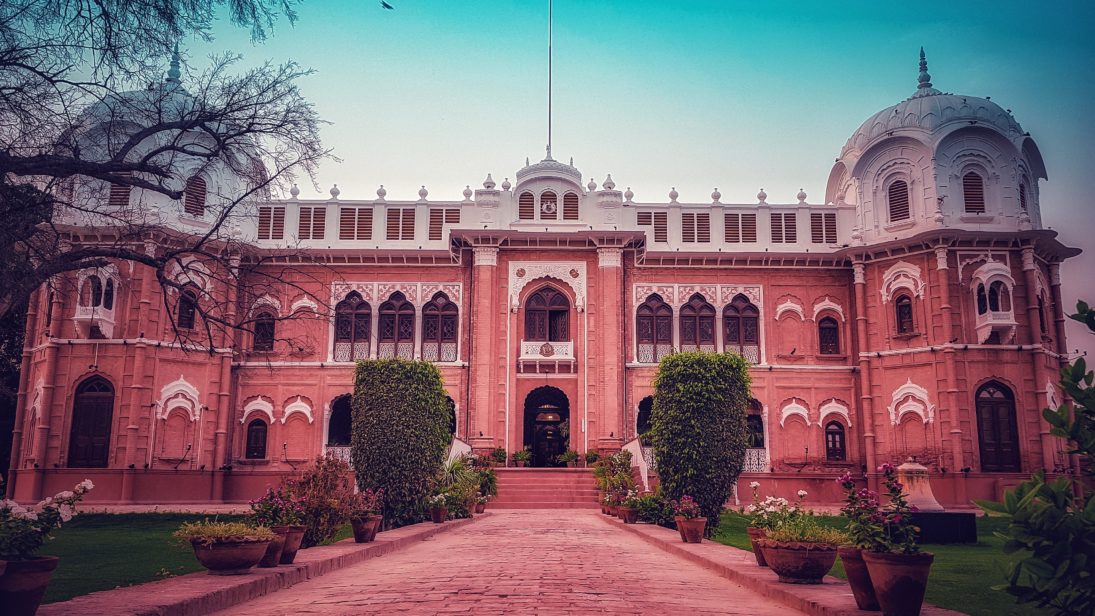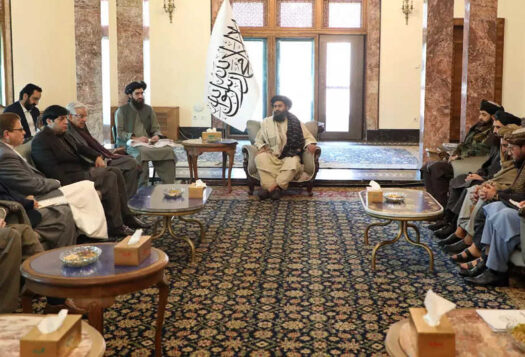
Pakistani Prime Minister Imran Khan and the Pakistan Tehreek-e-Insaf (PTI) ’s eleven-point election manifesto in 2018 included establishing a southern Punjab province as an administrative unit. The manifesto presented this as a means of strengthening the Pakistani federation. Although PTI lawmakers submitted a resolution in the Punjab Assembly on August 15, 2018 and introduced an amendment bill in the National Assembly on May 13, 2019, the issue has stalled. Previously, both the PPP and the PML-N governments had passed bills for the creation of this new province, but these did not include any concrete steps for its realization, leaving the issue in limbo.
The case for dividing Punjab into north and south provinces is not simply an administrative issue. Linguistically and ethnically distinct Seraikis, who mainly reside in southern Punjab, feel economically and politically dominated by Punjabi-speakers, who reside mainly in the north of the province. This appears to be an instance among many within Pakistani history where demand for autonomy has fallen along ethnic lines, including in the case of Bengalis, Balochis, and Pashtuns. In Pakistan, identity itself centers largely on common ethnic, linguistic, social, and religious traditions. This diversity and ethnic disparateness lends itself to federalism, a system of government that consists of an overarching federal government overlooking a union of partially self-governing provinces. Pakistan’s system of government is “federalist” in theory, but not in practice. Properly implemented, federalism could both serve as an effective form of government and be used as a tool to resolve ethnically-motivated conflicts. By dispersing power and promoting resource-sharing, the federal government could help ethnically-defined provinces dispel the “us-vs-them” discourse and focus on securing the wider socio-economic interests of the people and the country.
An Assessment of Ethnic Conflict in South Punjab
By dispersing power and promoting resource-sharing, the federal government could help ethnically-defined provinces dispel the “us-vs-them” discourse and focus on securing the wider socio-economic interests of the people and the country.
Socio-economic concerns underlie sharpened ethnic fault lines in Pakistan. Ted Robert Gurr’s Relative Deprivation theory helps explain the grievances held by the various ethnic groups in Pakistan. According to the theory, a group’s expectation and failure to obtain socioeconomic goals due to weakening state institutions creates a sense of deprivation, increasing the likelihood that the deprived group would demand representation and autonomy to close the disparity. Historically, an unfair distribution of resources and an increasingly centralized political system in Pakistan created an environment where minority groups demanded either increased provincial autonomy or their own province. These dynamics are currently unfolding in South Punjab.
Within Punjab, the Seraiki lack access to the state’s social services and feel disenfranchised. For instance, the Punjab government’s 2017–2018 health budget allocated more than twice the funds for hospitals located in the north of the province. Only 12 percent of the 30 percent allocated to the south was actually spent on projects benefiting the region. Lagging behind developmentally, the southern districts rank among the most poverty- ridden regions of the country. In contrast, five of the northern districts rank among the top ten most socially-developed districts of Pakistan. Decades of inadequate resource allocation and disenfranchisement, therefore, have provided traction to the Seraiki demand for a separate province, in which they would no longer depend on the Punjabi elite for key resources.
This demand and other calls for provincial autonomy within South Punjab have sparked fears that acceding to ethno-linguistically derived claims undermines national cohesion. Calls for an independent Bahawalpur province, drawing on its historical sovereignty as a princely state within British India, have also divided Punjabi politicians. Political leaders have provisionally supported the Bahawalpur province on the premise that it occurs on administrative grounds. The demand for a Seraiki province, on the other hand, goes beyond the notion of self-sufficiency and centers on identity. The Seraiki political movement began as a literary movement and gradually forged a distinct Seraiki identity. If the state were to accede to linguistic claims, it would also have to cater to distinct Hindko-speaking and Urdu-speaking provinces in Khyber Pakhtunkhwa (KPK) and Sindhi respectively.

The Footprint of Federalism
Within as multi-ethnic a state as Pakistan, federalism helps prevent national fracturing. Some might look at Pakistan and see a country divided along ethnic lines. This stems more from a mis-practice of federalism than the system of government itself. Pakistan has historically de-emphasized unitary governance. Similarly, it has approached ethnic conflicts through a narrow security and military lens, hindering the practice of federalism in its true spirit. As a political system properly instituted, federalism promotes and legitimizes each of Pakistan’s many represented ethnic groups. This form of recognition—in transcending notions of ethnic nationalism—could actually consolidate and strengthen national unity. Henry Hale, in Divided We Stand, notes a prevailing school of thought that argues granting a federating unit to an unrepresented ethnic group instills a sense of security and, in legitimizing their common sense of identity, reduces the likelihood of ethnic conflict. Creating an ethnolinguistic Seraiki province might also benefit the Seraiki people socio-economically.
Pakistan already, at least nominally, functions under a federal political system, and the Seraiki province could provide an opportunity to test its foundations. Pakistan’s 1973 constitution strengthened the country’s federal structure by conferring more power to the provinces. At the center of the constitution’s de jure commitment to federalism is the 18th amendment, which revised a number of articles to support power devolution and provincial autonomy. The 18th amendment helped mitigate ethnic tensions in Baluchistan. However, the 18th amendment’s influence in matters of ethnic conflict was diluted by the One Unit scheme, which had arisen as an integrationist policy in 1955. Prime Minister Mohamad Ali Bogra, who oversaw the scheme, said “there will be no Bengalis, no Pathans, no Sindhis, no Balochi, no Bahawalpuris, no Khairpuris. The disappearance of these groups will strengthen the integrity of Pakistan.” Instead of forging a single identity, this policy actually amplified ethnic tensions. The policy adversely affected especially Bengalis, who had already felt politically and economically marginalized. The Bengalis interpreted the merger as a move to undermine their numerical superiority in the legislature and alienate them from the power structure. Many include this among the reasons for the separation of East Pakistan.
Although a common language and culture have contributed to a distinct Seraiki identity, Seraiki nationalism is rooted in socio-economic grievances.
A series of factors explains why creating a separate South Punjab province might both strengthen the underpinnings of Pakistan’s federalism and alleviate ethnic tensions. While health, education and infrastructure backwardness in South Punjab underlie the demand for a new province, recognition of a distinct linguistic and cultural identity has consolidated it. Seraiki as a distinct language tied historically to the ethnic group feeds contemporary political activism. Janoobi Punjab Suba Mahaz, the region’s main political party, formed an alliance with the PTI on the grounds that they would jointly create a South Punjab province in the first one hundred days of being in power. An independent and legitimate legislature would also help promote dialogue and decrease violence. Further, including a previously underrepresented area in the federation would grant the Seraikis greater autonomy in decision-making. Although a common language and culture have contributed to a distinct Seraiki identity, Seraiki nationalism is rooted in socio-economic grievances. A forum for local parties to legislate directly on issues for the province would help promote development and concretely improve civilian livelihoods. Under the 18th amendment and its support for provincial autonomy, greater autonomy and development would effectively craft, as Katharine Adeney argues, dual loyalties—one to the ethnolinguistic group, the other to the state.
Conclusion
Pakistan’s federal system has historically provided a means of pacifying ethnic conflict. With greater autonomy, ethnolinguistic groups can feel more buy-in with the larger state. Minority groups, when given greater representation and say in decision-making, adopt more legitimized forms of action, such as legislation or judicial inquiry. This sows the seeds of a more responsive, economic-efficient government and non-violent society. This is exactly what the new Seraiki province of South Punjab hopes to foster. For a united Pakistan, power divided is power sustained.
***
Image 1: Hassam Ali via Pexels
Image 2: Wikimedia Commons


